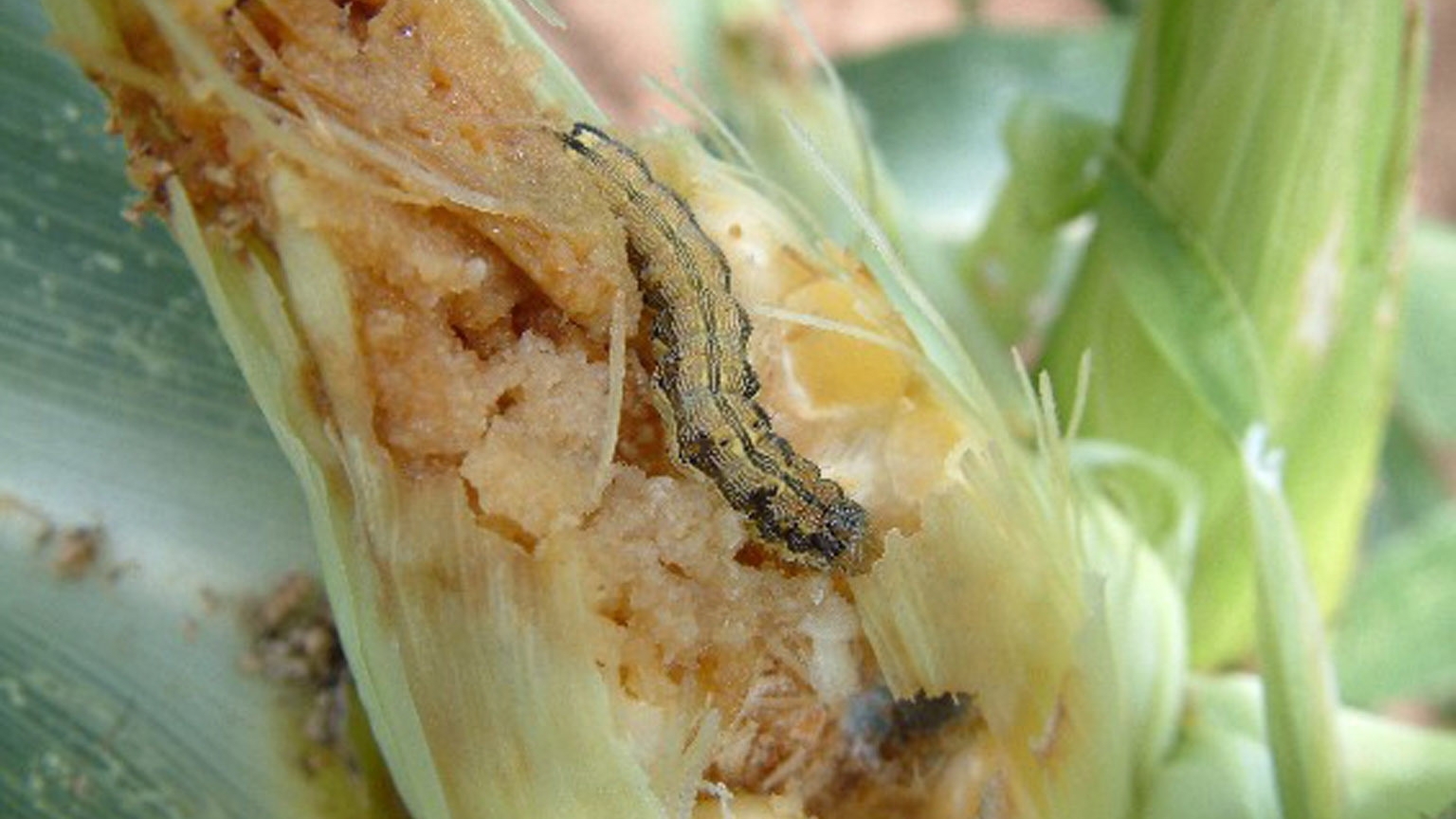Old World Bollworm

Old World bollworm (Helicoverpa armigera) is an important agricultural pest that feeds on more than 180 plant species, including corn, cotton, small grains, soybeans, peppers, and tomatoes. Adult moths are strong flyers; however, it is the larvae (caterpillars) that cause serious damage by boring into the plant's flowers and fruits and feeding inside.
Old World bollworm is native to Africa, Asia, Australia, and Europe. It was first discovered in Brazil in 2012 and is now also present in South America and the Caribbean. In 2014, the pest was found in Puerto Rico, and in 2015, specimens were captured in Florida; however, no Old World bollworm have occurred in Florida in subsequent years, despite continuous survey. In 2019, APHIS detected adults in areas adjacent to Chicago’s O’Hare International Airport and is eradicating the isolated population. The pest has not been found in agricultural areas.
Adult moths have a wingspan of about 1.4 inches and vary in color from light yellow to greenish brown to orangish brown. Adults are active in the late afternoon and at night.
Fully developed larvae can be up to 2 inches long and can range in color from bluish green to brownish red. Signs of larval damage includes:
- Holes bored into the base of flower buds, fruit, or bolls
- Feeding damage to leaves and shoots
- Young fruit or bolls that fall prematurely
- Internal feeding damage to fruit
All Old World bollworm life stages are nearly identical to those of the native corn earworm (Helicoverpa zea), and both species feed on the same plants. The two species can only be distinguished from each other by a trained professional. Corn earworm is found throughout most of North America, and there is a long history of pest management for this species. Please report any strange and concerning damage or specimen finds, including:
- High levels of larval damage to crops
- Sudden outbreaks of larvae
- Damage to plants that has not been observed in the past
- Finds of larvae in unusual locations
Old World bollworm adults can fly long distances to lay eggs. They are also migratory and can be carried by wind. Larvae (caterpillars) can hitchhike on fruits, vegetables, plants, and other commodities. You can help prevent the spread of Old World bollworm by:
- Not transporting or mailing fresh fruits, vegetables, cut flowers, or plants into your State or into the country unless U.S. agricultural inspectors have cleared them first.
- Allowing Federal, State, or local agricultural officials access to your property to install and inspect insect monitoring traps.
Commercially available insecticide sprays and genetically modified crops that contain a naturally occurring microorganism called Bacillus thuringiensis (Bt) may control Old World bollworm. The protein produced by Bt is lethal to caterpillars. Both Bt cotton and Bt corn are widely grown in the United States. In most cases, best management practices for controlling the corn earworm (Helicoverpa zea) should also work with Old World bollworm.
Report Plant Pests and Diseases
Have you seen this pest or signs of pest damage? Immediately report your findings.
Find your State plant regulatory official
Find your State plant health director
Controlling Old World Bollworm
An active eradication of Old World bollworm is currently underway at Chicago O’Hare International Airport. Spot treatments using a combination of chlorantraniliprole and Helicoverpa armigera nucleopolyhedrovirus have targeted areas immediately around the airport where suitable habitat exists, including industrial corridors, vacant lots, and rail/automobile rights-of-way. These treatments typically occur four times each year between June and September, following all product labeling and environmental compliance requirements.

